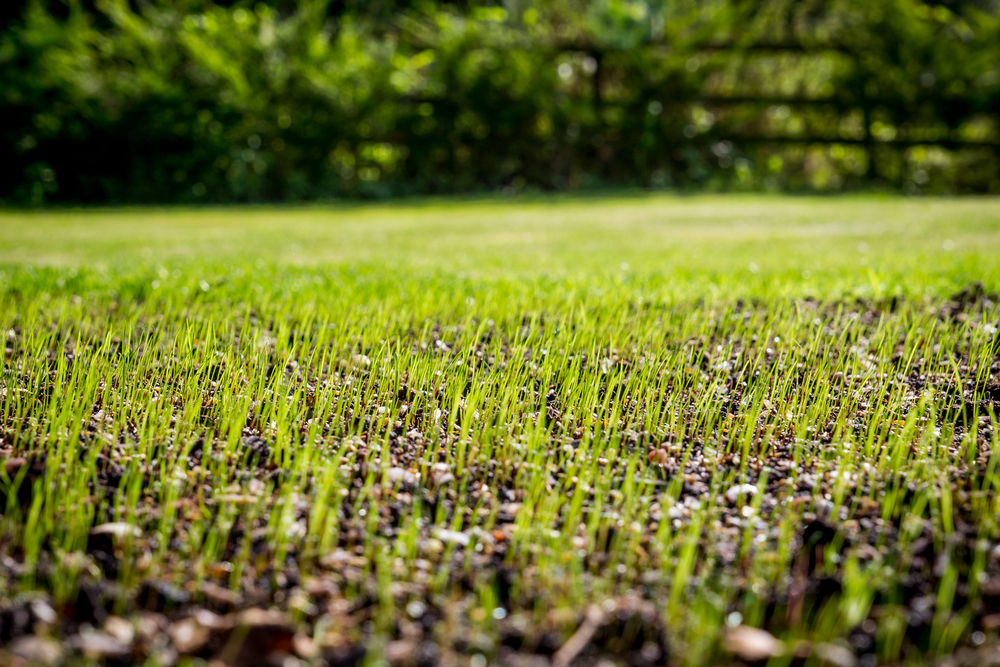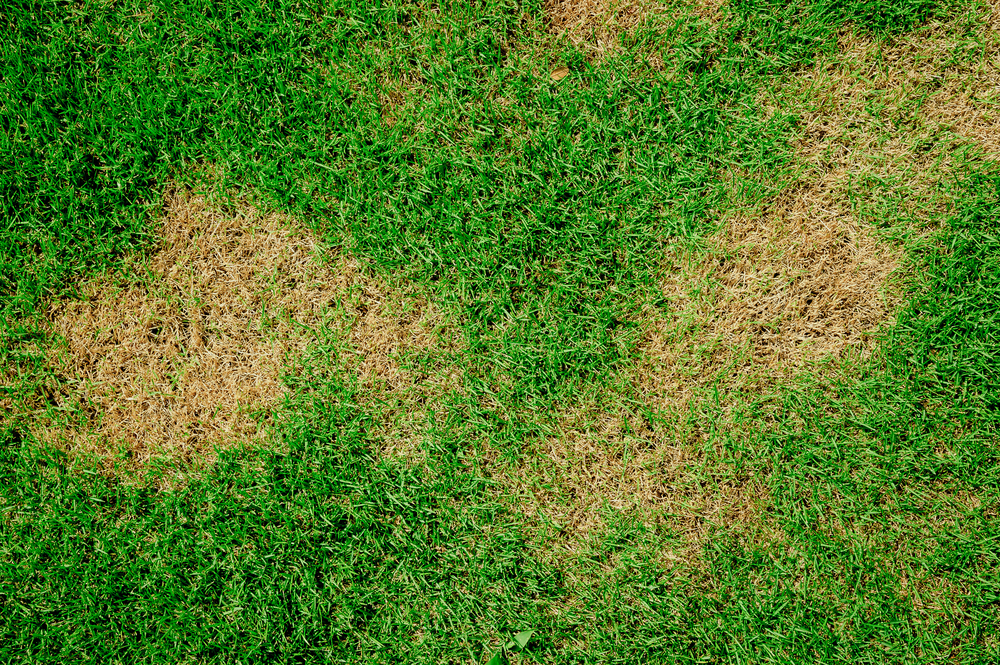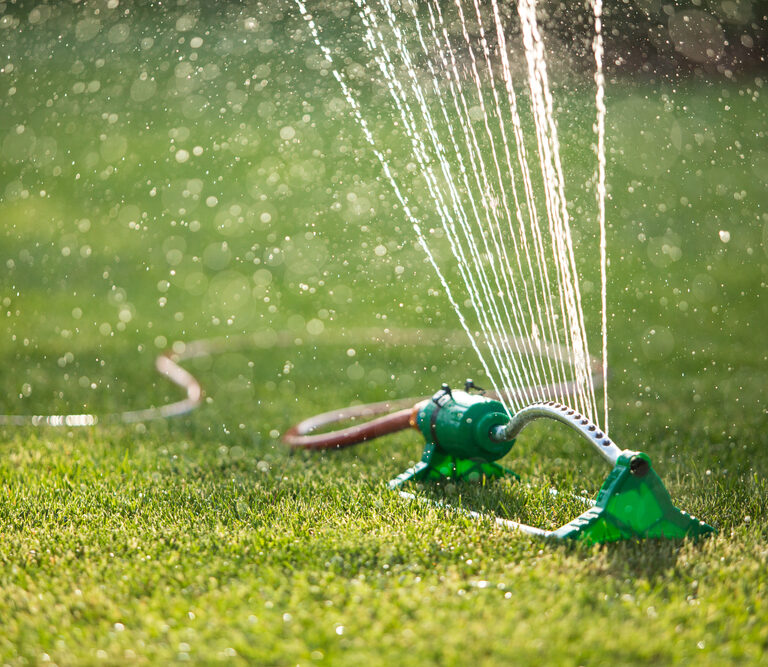Want the greenest lawn the world has ever seen? Want to make your neighbors jealous? Want to make the Gardens of Versailles look like a load of trash?
If that’s your plan, you need to look after your lawn properly. And if you want to look after your lawn properly, you need to water your lawn properly. In this guide, we explore how long you should be watering your lawn and offer lots of handy tips and hacks for lawn-watering perfection.
The Type of Lawn You Have
What you first need to do first is calculate your lawn’s weekly watering needs. If you do a weekly calculation, it becomes easy to build a tidy little schedule for watering your lawn so that you’re caring for it consistently.
To do this, you need to know what type of grass you have. If you didn’t plant it yourself, you need to do some work to determine what it might be. Here’s a great video that identifies many common types of grass.
As the video states, some grasses are warm-weather grasses, while some grasses are cold-weather grasses. Generally speaking, cold-weather grasses need more water than warm-weather grasses.
If you can’t work out what grass you have, take a couple of photographs and show them to a member of staff at your local nursery—they’ll be able to tell you exactly what type of grass you have.
Getting the Right Amount of Water
Again, you should determine exactly what grass you have to work out exactly how much water it needs. But as a general guide, most grasses need between 1” and 1.5” of water per week (though this will vary at different times of the year).
Now you need to work out how to give your grass what it needs.
You do that by measuring the water output of your sprinkler. Generally, a sprinkler will squirt out about 1” of water per hour, but all sprinklers vary. So what you should do is get yourself a tuna can, which is usually around 1” in height (measure it just to make sure). Then put it near your sprinkler before turning your sprinkler on.
Time how long it takes for the water to reach the rim of the tuna can. That’s how long it takes for your sprinkler to shoot out 1” of water. Do the test a couple more times (just to make sure your sprinkler is sprinkling consistently); then you can plan your watering schedule accordingly.
Say, for example, your sprinkler shoots out 0.5” of water in twenty minutes, and you know your grass needs 1” of water. That means you should give your grass two sessions of watering twenty minutes a week. Easy!
But no matter how many minutes a week you need to water your grass, don’t do it all at once.
Say your grass needs 1” of water per week. If you give it that water all in one heavy session, you’ll saturate and damage your grass. Instead, you should water your grass 2 or 3 times a week. 3 times a week is optimum, but 2 times a week is usually fine.
How Should I Water New Grass Seed?
If you’ve just planted some brand-new seeds, things are a little different, and you need to change your plans accordingly. Let’s say you planted those seeds today. You should water them 4 times a day, for 15 minutes at a time, for the next two weeks.

For the following week, water your lawn (or the area which will soon be a lawn) for around 40 minutes per day, once a day. For the week after that, water for 40 minutes a day every other day.
After that, you can revert to normal watering schedules.
Is My Lawn Being Watered Enough?
If your lawn is looking brown, dry, and arid, it’s not getting enough water. Equally, if you have lots of fungus and thatch, your lawn might be getting too much water.

If either of these things is happening, you need to go back to basics and follow the rules we’ve already outlined.
Do I Need a Sprinkler for Watering My Lawn?
You don’t need one, but it definitely makes the job easier, more reliable, and more consistent. If you can afford a sprinkler, get a sprinkler. Your grass will get an even feed, it’ll look better, and you won’t need to spend hours doing it by hand.
A sprinkler also makes it much easier to measure how much water you’re giving your lawn (with the nifty trick outlined above), as the output is pretty consistent. If you’re interested in buying a sprinkler for your garden, check out our list of the best lawn sprinklers of 2021.
Lawn Watering Tips and Hacks
Watering your lawn is important. But so too is making that watering easy and effective. Here are our favorite lawn-watering tips and hacks.
Pay Attention to Rain
If you’re getting lots of showers, reduce your watering a little. If you’re experiencing ridiculous downpours, you might not need to water your grass at all.
There are two ways you can adapt to rainfall. The first is by checking weather reports, which tell you how much rain you can expect in the coming week. You can use these to tinker with how much water you give your lawn.
If you’re a little more particular and you want really reliable stats, consider buying a rain gauge so you know exactly how much rain your garden has received over a given period. If you’re concerned with watering your lawn, flowers, and plants properly, a rain gauge is a good investment.
You can also use your rain gauge for the tuna can trick we mentioned earlier.
Go Year-Round
Some people think you don’t need to water your lawn during colder months. Those people are wrong. Don’t listen to them.
Yes, you might need less water in colder months, but less water isn’t the same as no water. You need to water your lawn year-round, it’s just that you need to do more watering in summer to account for evaporation.
Check, Check and Check
Check that you’re watering your lawn in the way you should be watering your lawn. From time to time, check that you’re doing things right. Look at your grass, and check whether or not it’s the right color. Consistent monitoring in this way is key to good lawn health.
If it looks moist, green, fresh, and vibrant, that’s a good sign. If it’s looking brown, check that you’re watering it enough. If you are, and the brown grass won’t go away, check with a professional to see what other problems your lawn might be having. You might have fungus, or there might be stuff buried under your soil, especially if your house was built recently.
You should also occasionally check your soil. Try pushing a 6” screwdriver into it. If it goes all the way in with a little resistance, your soil is just right. If it won’t go in, you need more water. If it slips in, you need less water.
It’s also important to note that different soils need different levels of water, so you might need to make slight adjustments based upon how your soil is performing. There are many different types of soils, so make sure you know which one you have.
That trick we taught you with measuring your sprinkler output, you should perform it every six months or so, just to make sure your sprinkler is still performing the way it always has.
Water in the Morning
As much as possible, you should always water your lawn early in the morning. If you water in the morning, your grass will absorb the water throughout the day, and less of it will be lost to evaporation.
If you water your lawn late at night, it will be damp for many hours, which can lead to poor grass and lots of fungi.
Lawn Have Mercy
The grass is always greener on the other side – or is it?
Sure, it can be tricky to get the right balance when it comes to watering your lawn. But if you use our tips above and take note of your grass type, current climate, and stick to a solid watering schedule, you’ll be the envy of your neighbors in no time.
